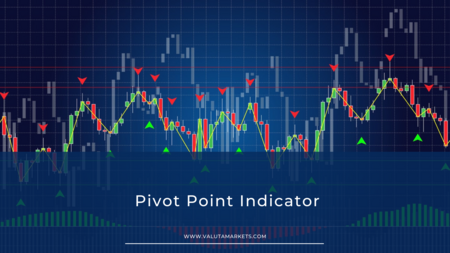A pivot point refers to calculations or a technical analysis indicator used in determining the overall market trend over varying time frames. It identifies reversals and trends, particularly in forex, equities, and commodities markets. In itself, the pivot point indicator is the average of the intraday low and high and the previous trading day’s closing price.
Trading above this pivot point indicates an ongoing bull market sentiment on the next day. On the other hand, trading below this point shows a bearish sentiment. The indicator is based on the pivot point, but it also includes additional resistance and support levels, whose projections are based on the pivot point calculation.
These different levels allow traders to identify where the trading price could experience resistance or support. At the same time, the trader can tell the direction of the price trend if the prices move along the levels. Traders use the pivot point indicator to determine stops, profit-taking, and levels of market entry.
How to use pivot points for range trading
The easiest way to use pivot point levels for forex trading is to use them the same way as the regular resistance and support levels. Like the other levels, the price tests the levels repeatedly when using pivot points. The more often currency pairs touch a point level and reverse, the stronger this level is. Essentially, pivoting means reaching a specific resistance and support level and reversing.
If you can see what is held in a pivot level, you’ll be able to identify some ideal trading opportunities.
Types of Pivot Points
Before you start using the pivot point indicator for your day trading, there are some important things to keep in mind about the different types. The following section will analyze each type of indicator and how to calculate the pivot point in your forex trading using them. The three different pivot point indicators are Standard Pivot Points, DeMark Pivot Points, and Fibonacci Pivot Points.
1. Standard Pivot Points
Here is how to calculate pivot points using standard pivot points. To start the calculation for this formula, you’ll need the arithmetic mean of the high (H), the low (L), and finally, the previous period’s close (C). The result is called the base pivot point (P).
- P = (H + L + C)/3
The next step involves deriving two resistance and support levels from this (P). Take the difference between high and low as D. So, D = H – L
- The first support will be S₁ = 2P – H
- The second support will be S₂ = P – D
- The first resistance will be R₁ = 2P – L
- The second resistance will be R₂ = P + D
2. DeMark Pivot Points
To calculate forex pivot points using DeMark pivot points, you’ll need to use a different definition for the base pivot point. You can calculate the base point using three different approaches using this method. The calculation you decide to use should be determined by how the close and open compare.
For these three, you’ll define a variable X whose value depends on if the open is lower or higher than the close.
- When the close is lower compared to the open: X = H + 2L + C
- When the close is higher compared to the open: X = 2H + L + C
- If the open and the close are equal: X = H + L + 2C
The last trading value above is commonly used when analyzing a forex pivot point strategy. Since forex exchange is a 24-hour market, the open is almost always equal to the close. If you analyze a daily chart over a week, both the open and the close are merely conventions. This differs from the stock market, where the open and the close are very distinct, separated by time and, often, price.
Once you derive the value for X, use it to calculate (P), the base pivot point.
- P = X/4
In DeMark pivot points, you also calculate the support and resistance levels from X. Here, the points don’t utilize multiple support and resistance levels.
- R₁ = X/2 – H
- S₂ = X/2 – L
3. Fibonacci Pivot Points
To calculate forex pivot points using the Fibonacci indicator, you begin from the same point as when using the standard indicator. Therefore, start by calculating the base pivot point (P). Consider the difference between the high and the low as (D). To calculate the support levels, subtract multiples of D from P. To calculate resistance levels, add multiples of D to P. These multiples are derived from the Fibonacci sequence.
Here are the exact calculations:
- R₁ = P + 0.382D
- R₂ = P +0.618D
- R₃ = P + D
- S₁ = P – 0.382D
- S₂ = P – 0.618D
- S₃ = P – D
Traders that can read pivot points can use them to establish a Fibonacci trading strategy in FX.
Conclusion
Pivot point indicators are technical analysis tools, and they can be used to determine likely resistance and support levels. To boost the consistency of your trading strategy, look at the monthly, weekly, daily, and hourly points to determine probable support and resistance.

